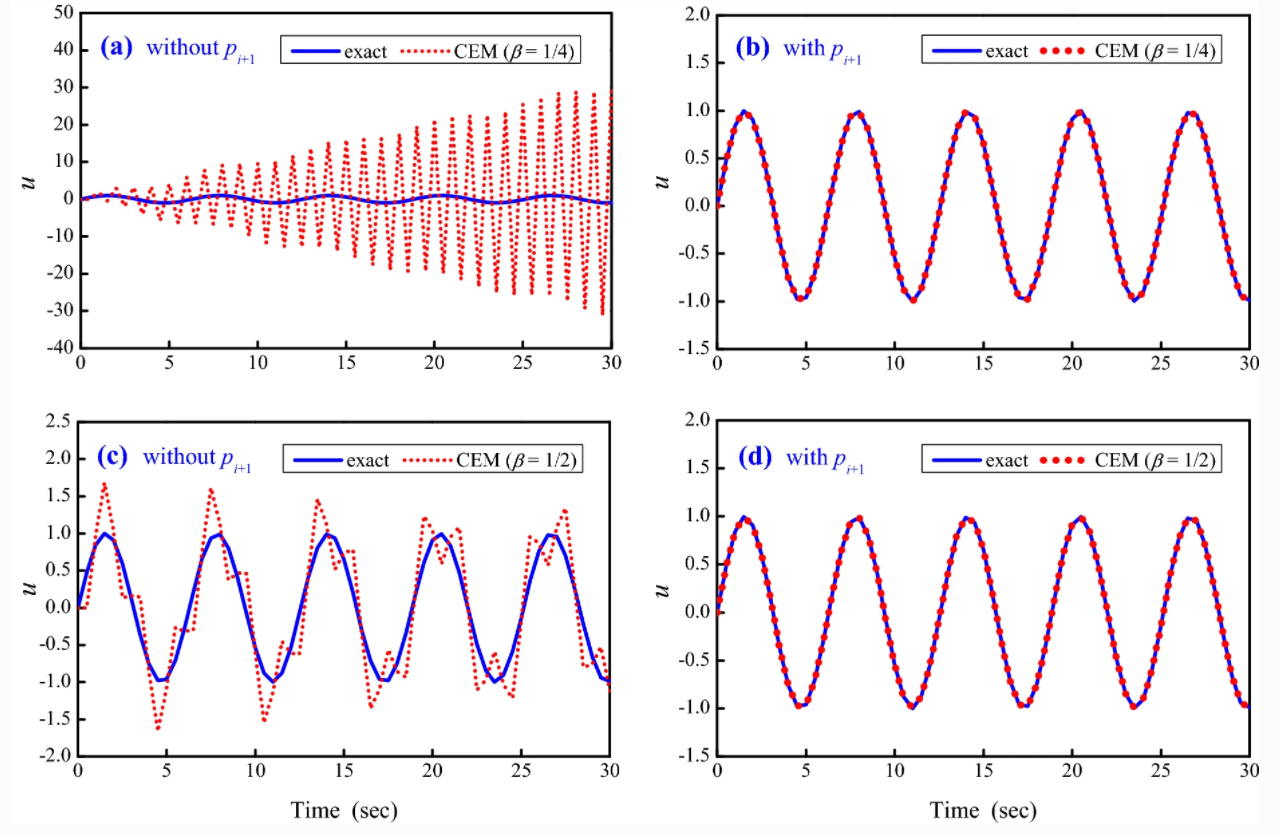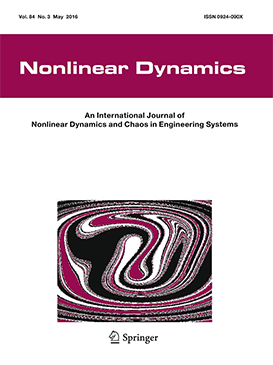Non-iterative methods for dynamic analysis of nonlinear velocity-dependent problems
Hence, it is still of great interest to develop a completely explicit SDIM that has no such disadvantages. An eigen-based theory is used to develop a completely explicit SDIM in this work.

Fig.1:High-frequency steady-state response to sine load for CEM
Technology Overview
Numerical confirmations reveal that the CPU demand of the proposed family of completely explicit SDIMs can be only about 2.3% of that consumed by a semi-explicit method or an implicit method for a 1000-DOF system. As a result, it is competitive with other second-order accurate methods. The superiority of the proposed family of SDIMs over the current completely explicit SDIMs is summarized in Table 2, where the most significant improvements are no weak instability except for βσ=14 and no overshoot in high-frequency steady-state responses.
Applications & Benefits
Some numerical examples will be adopted to validate the numerical properties of the proposed family of SDIMs and to validate that it can be applied to solve nonlinear velocity-dependent problems without involving any nonlinear iterations. Finally, a series of large nonlinear velocity-dependent systems will be solved to assess the computational efficiency of the completely explicit SDIMs, semi-explicit SDIMs and implicit methods.
Abstract:
A class of nonlinear velocity-dependent problems must be solved iteratively for conventional integration methods since there exists no completely explicit integration method among them. A completely explicit structure-dependent integration method is developed in this work, and it can be applied to solve such problems non-iteratively. A completely explicit method for time integration is characterized by the adoption of explicit difference formulas for both the displacement and velocity increment. It can be derived from an eigen-based theory, and this theory can provide a fundamental basis for the feasibility of time integration. The new method generally has no serious disadvantages of weak instability and unusual overshoot in high-frequency steady-state responses that have been found in the current completely explicit structure-dependent integration methods. It is analytically and numerically verified that it can be used to solve nonlinear velocity-dependent problems without nonlinear iterations and can have a comparable accuracy in contrast to the solutions obtained from conventional integration methods with an iteration procedure. Its computational efficiency due to no nonlinear iterations is also affirmed by numerical examples.

Non-iterative methods for dynamic analysis of nonlinear velocity-dependent problems
Author:Chang S.-Y.
Year:2020
Source publication:Nonlinear Dynamics volume 101, p.1473–1500, 1 July 2020
Subfield Highest percentage:99% Ocean Engineering #1/96
https://link.springer.com/article/10.1007/s11071-020-05836-8
